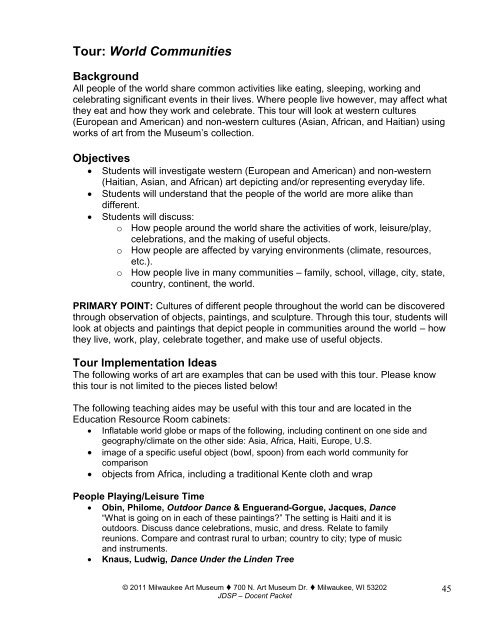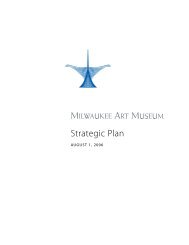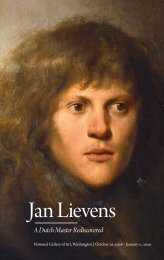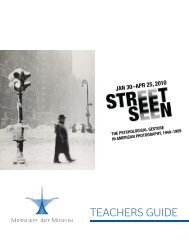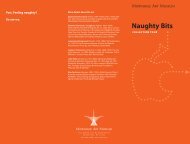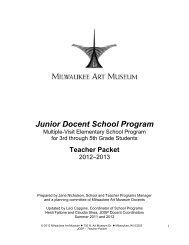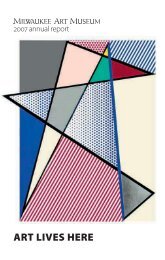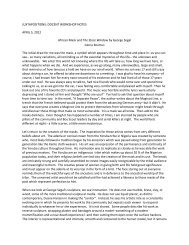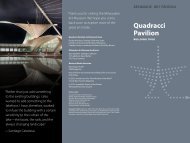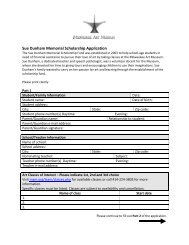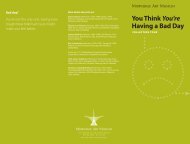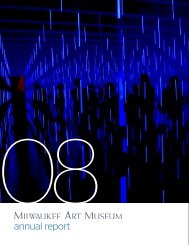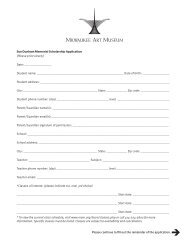Junior Docent School Program - Milwaukee Art Museum
Junior Docent School Program - Milwaukee Art Museum
Junior Docent School Program - Milwaukee Art Museum
Create successful ePaper yourself
Turn your PDF publications into a flip-book with our unique Google optimized e-Paper software.
Tour: World Communities<br />
Background<br />
All people of the world share common activities like eating, sleeping, working and<br />
celebrating significant events in their lives. Where people live however, may affect what<br />
they eat and how they work and celebrate. This tour will look at western cultures<br />
(European and American) and non-western cultures (Asian, African, and Haitian) using<br />
works of art from the <strong>Museum</strong>‟s collection.<br />
Objectives<br />
<br />
<br />
<br />
Students will investigate western (European and American) and non-western<br />
(Haitian, Asian, and African) art depicting and/or representing everyday life.<br />
Students will understand that the people of the world are more alike than<br />
different.<br />
Students will discuss:<br />
o How people around the world share the activities of work, leisure/play,<br />
celebrations, and the making of useful objects.<br />
o How people are affected by varying environments (climate, resources,<br />
etc.).<br />
o How people live in many communities – family, school, village, city, state,<br />
country, continent, the world.<br />
PRIMARY POINT: Cultures of different people throughout the world can be discovered<br />
through observation of objects, paintings, and sculpture. Through this tour, students will<br />
look at objects and paintings that depict people in communities around the world – how<br />
they live, work, play, celebrate together, and make use of useful objects.<br />
Tour Implementation Ideas<br />
The following works of art are examples that can be used with this tour. Please know<br />
this tour is not limited to the pieces listed below!<br />
The following teaching aides may be useful with this tour and are located in the<br />
Education Resource Room cabinets:<br />
Inflatable world globe or maps of the following, including continent on one side and<br />
geography/climate on the other side: Asia, Africa, Haiti, Europe, U.S.<br />
image of a specific useful object (bowl, spoon) from each world community for<br />
comparison<br />
objects from Africa, including a traditional Kente cloth and wrap<br />
People Playing/Leisure Time<br />
Obin, Philome, Outdoor Dance & Enguerand-Gorgue, Jacques, Dance<br />
“What is going on in each of these paintings?” The setting is Haiti and it is<br />
outdoors. Discuss dance celebrations, music, and dress. Relate to family<br />
reunions. Compare and contrast rural to urban; country to city; type of music<br />
and instruments.<br />
Knaus, Ludwig, Dance Under the Linden Tree<br />
© 2011 <strong>Milwaukee</strong> <strong>Art</strong> <strong>Museum</strong> 700 N. <strong>Art</strong> <strong>Museum</strong> Dr. <strong>Milwaukee</strong>, WI 53202<br />
JDSP – <strong>Docent</strong> Packet<br />
45


